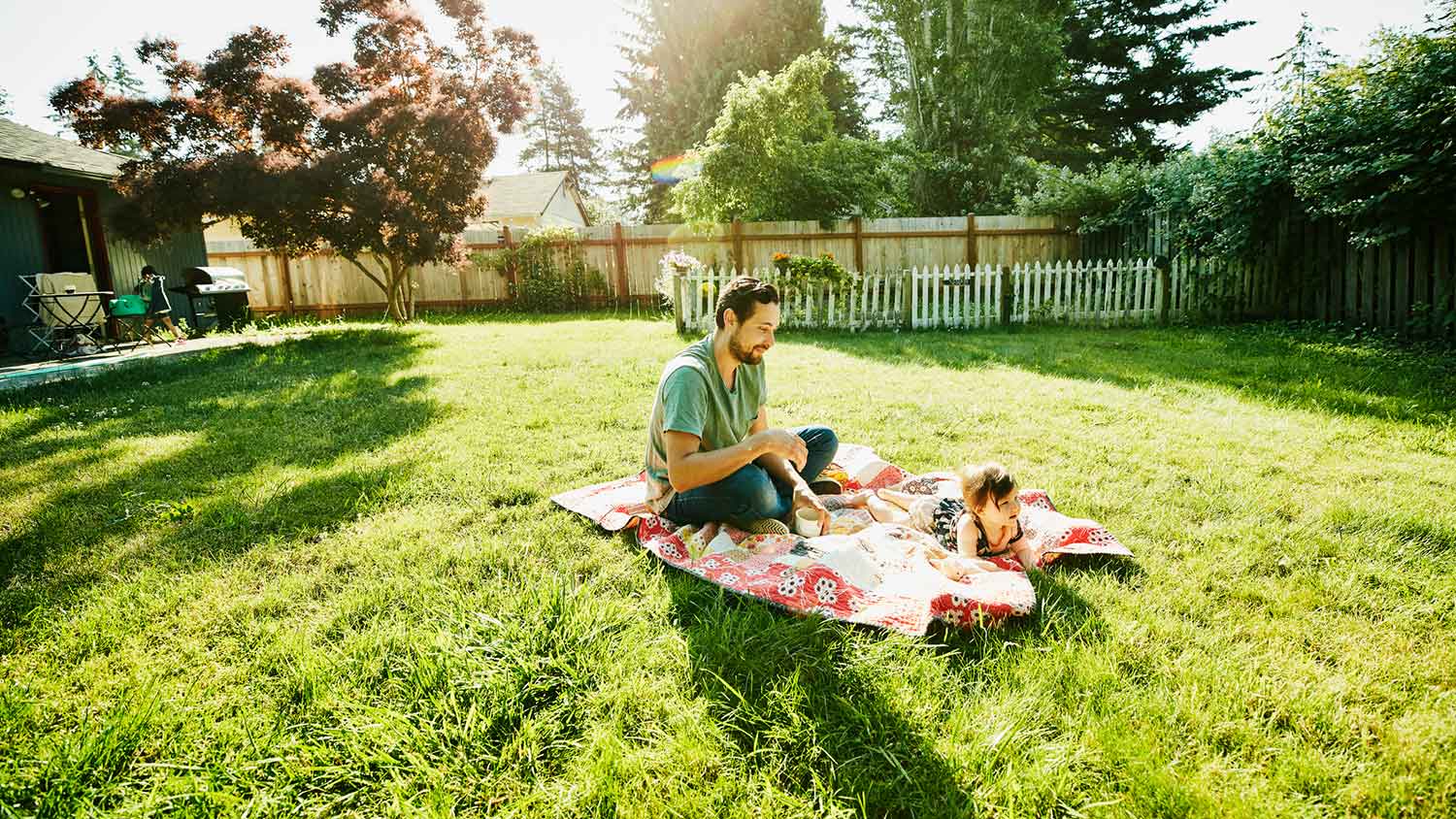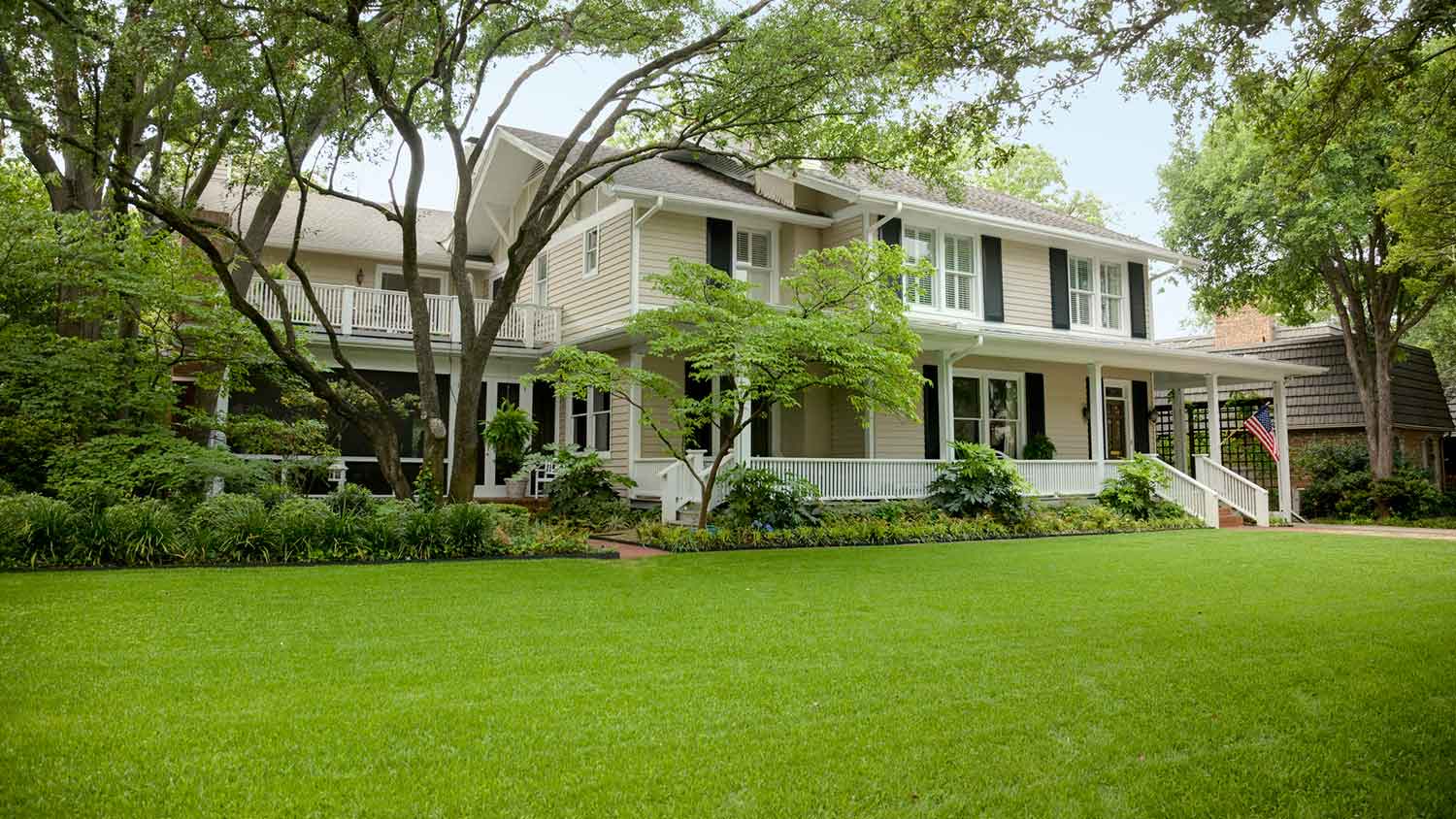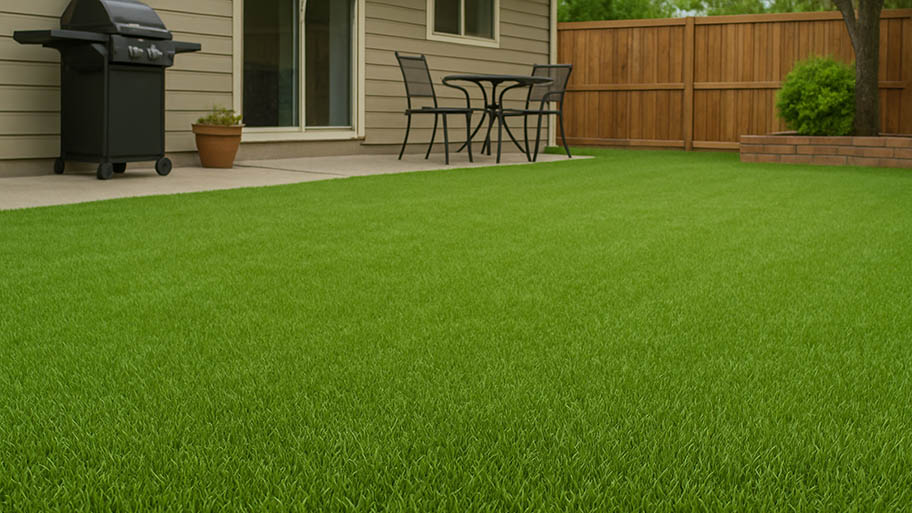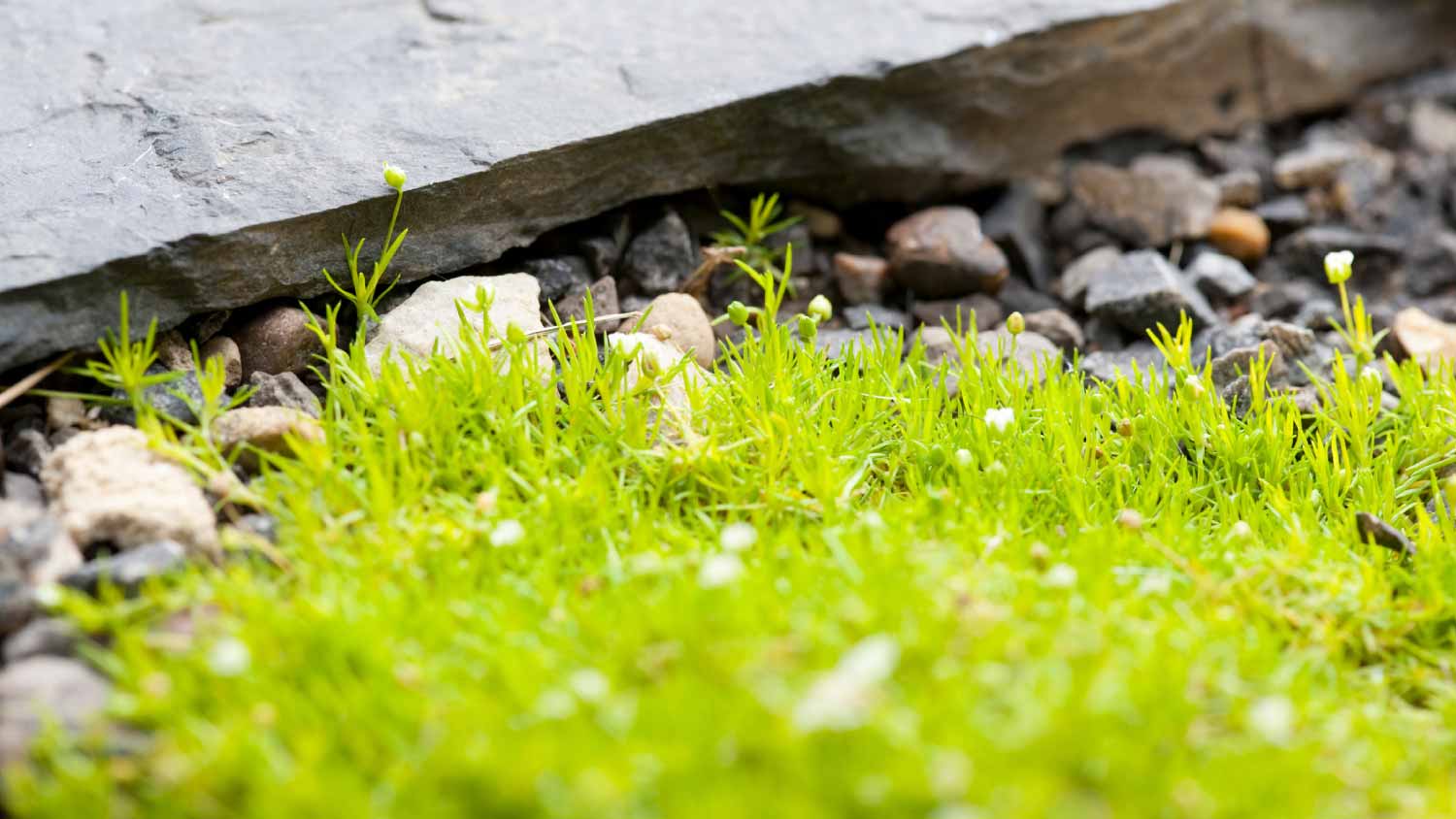
Removing an old lawn is often necessary to plant new grass or build a new outdoor structure. Find out what to budget for your lawn removal cost.
See who comes out on top between these lean, green, lawn-covering machines


Your region's climate plays a major part in which type of grass you should choose.
Select warm-season grasses in hot regions with little rain.
Cool-season grasses work better in milder regions where you want a green lawn year-round.
Picking the right grass in a transition zone requires you to pay close attention to your yard.
There are so many grass species out there that selecting the right type for your lawn can be a daunting prospect. An important part of choosing the right grass that some people overlook is determining which varieties will work best with their local climate.
Playing matchmaker between the weather in your region and the many grass types available to you will help you avoid the look of a dried-out backyard. Paying close attention to your climate also instantly narrows down the list of potential lawn cover options. When it comes to cool-season versus warm-season grass and which one is the right fit for your yard, there should be a pretty obvious winner by the time you get through our handy guide.
Cool-season grasses, like ryegrass and fescue, are typically grown from seeds and thrive during the spring and fall seasons when average temperatures sit between 50 and 80 degrees Fahrenheit. When the weather warms up during the summer months, the grass becomes dormant. Dormancy occurs during winter, as well, with the grass likely to appear brownish in color following the first frost.
Warm-season lawn covers, like centipede grass and St. Augustine grass, thrive in warm temperatures between 80 and 95 degrees Fahrenheit and go dormant in cooler temperatures. These grasses require consistent and measured watering to keep them moist and promote growth. Warm-season grass is perfect for people living in the southern parts of the country, where temperatures stay warm throughout the year.
As the names suggest, the most significant difference between these grasses is when they grow. Warm-season varieties typically grow from June to early September. Cool-season varieties thrive in the fall and early spring when the weather is, well, cooler.
Warm-season grasses can survive in hotter, drier climates but go dormant when the temperatures get too cold. Their counterparts usually stay green for most of the year, even when temperatures drop below 30 degrees Fahrenheit.
It's best to seed cool-season grasses in the fall after the heat of summer has lifted, although there are variations in the next planting time depending on species and local climates. For successful germination, you should seed warm-season grasses when there's no risk of frost, so late spring or summer are the safest bets.

If you live in the right climate for warm-season grass, there are plenty of benefits and a few drawbacks to note. It’s worth mentioning, however, that these are general rules, and there are exceptions and variations for individual species.
According to the Virginia Cooperative Extension, drought-tolerant warm-season grasses need, on average, 30% less water than cool-season grasses, making them ideal for dry climates and water conservation efforts.
They’re less bothered by pests.
They’re more tolerant of poor soil conditions, have better nutrient-absorbing abilities, and have more relaxed fertilization requirements.
If you like a neat lawn, warm-season grasses do better when mown shorter than many cool-season species.
They make better wildlife habitats because they're taller, clump-forming, and stiff-stemmed throughout the winter.
Established grasses work well on slopes that need additional erosion control.
If soil temperatures drop below 65 degrees Fahrenheit, your lawn will be brown rather than lush green for four or five months while the grass is dormant.
Most varieties cost more to buy.
They’re trickier and slower to establish than cool-season grasses.
If you have freezing winters, the grass could die off completely.
They require more weed control management.

The benefits and drawbacks below apply to most cool-season grasses, but always check the individual species, as there are plenty of exceptions.
There are more cool-season grass options than warm-season options.
You’re more likely to get a lush lawn throughout the entire year.
They establish with less effort and cost.
Extreme winter weather does not kill them.
The short-term erosion control benefits are better because they establish more quickly,
They don’t cope with extreme summer droughts and high heat as well as warm-season grasses.
They have higher irrigation requirements.
They’re not as tolerant of poor soil conditions.
They have higher nutrient demands.
They don’t provide good quality nesting or protective wildlife habitats because they mat down faster than mature warm-season species.
They’re more susceptible to pests.
Their long-term soil erosion control isn't as good.
When choosing between cool- and warm-weather grasses for your yard, you have to consider two things: appearance and location.
Many people are concerned first and foremost with the appearance of their grass and want it to be lush and green for as long as possible. In this case, cool-weather grass is the best choice due to its ability to provide a vibrant green lawn during a wider range of weather conditions.
Others may be focused on conserving water, especially in states with water efficiency laws, like California, New York, Texas, and Georgia. If this is the case for you, warm-season grass is a much better pick, as it can survive harsh, dry conditions and stay alive much longer than cool-season grass.
You should also seriously consider where you live when choosing your grass. If you live in northern states that experience all four seasons, especially brutal winters, using cool-weather grass is the best option. However, if you live in southern states that experience warm or dry temperatures throughout the majority of the year, warm-season grass is likely better for your lawn.
For some locations in the United States, there’s not a cut-and-dried answer to whether cool-season or warm-season grass is best. These areas often experience seasonal temperatures that vary from one year to another and aren’t consistent with mainly cool or mainly warm climates, making it hard to choose between the two major grass types.
Based on data from the U.S. Department of Agriculture’s plant hardiness maps, many refer to these inconsistent temperature areas as the transition zone, and in these places, using a mix of both types of grasses can work. If you live in a transition zone, it can be more of a challenge to choose the right grass for your landscaping.

When deciding if you’ll use cool-season grass, warm-season grass, or a mix of both, you want to consider the climate of your location first. If you live in an area with a higher elevation, choose cool-season grass. If you live in lower elevations, opt for warm-season grass.
Then, you can consider the exact areas where you’ll plant your grass. Are certain locations in direct sunlight or in shady areas more often? Which areas can you easily water? The way you answer these questions should help narrow down your decision.
It’s common for people to choose both types of grass, with one in the front yard and another in the backyard. Keep this option open as you study your lawn and make your decision, or reach out to a lawn care specialist near you for a professional opinion.
Gemma Johnstone contributed to this piece.
From average costs to expert advice, get all the answers you need to get your job done.

Removing an old lawn is often necessary to plant new grass or build a new outdoor structure. Find out what to budget for your lawn removal cost.

Artificial grass is a low-maintenance alternative to traditional turf. Learn how much artificial grass installation costs and what affects your price.

Your total lawn care cost depends on several factors, including the type of service and lawn size. Our guide will cover what you can expect to pay for lawn care.

Why is moss growing in your lawn? Learn what makes moss grow and how you can get rid of it and make your lawn the envy of your neighbors.
Fertilizer burns can result in discolored or dead grass. These nine tips will help prevent lawn burn and keep your yard looking healthy and green with fertilizer.

If you notice brown patches, thin blades, or weeds on your lawn, you should call a lawn care company. Here’s who to call for lawn problems.